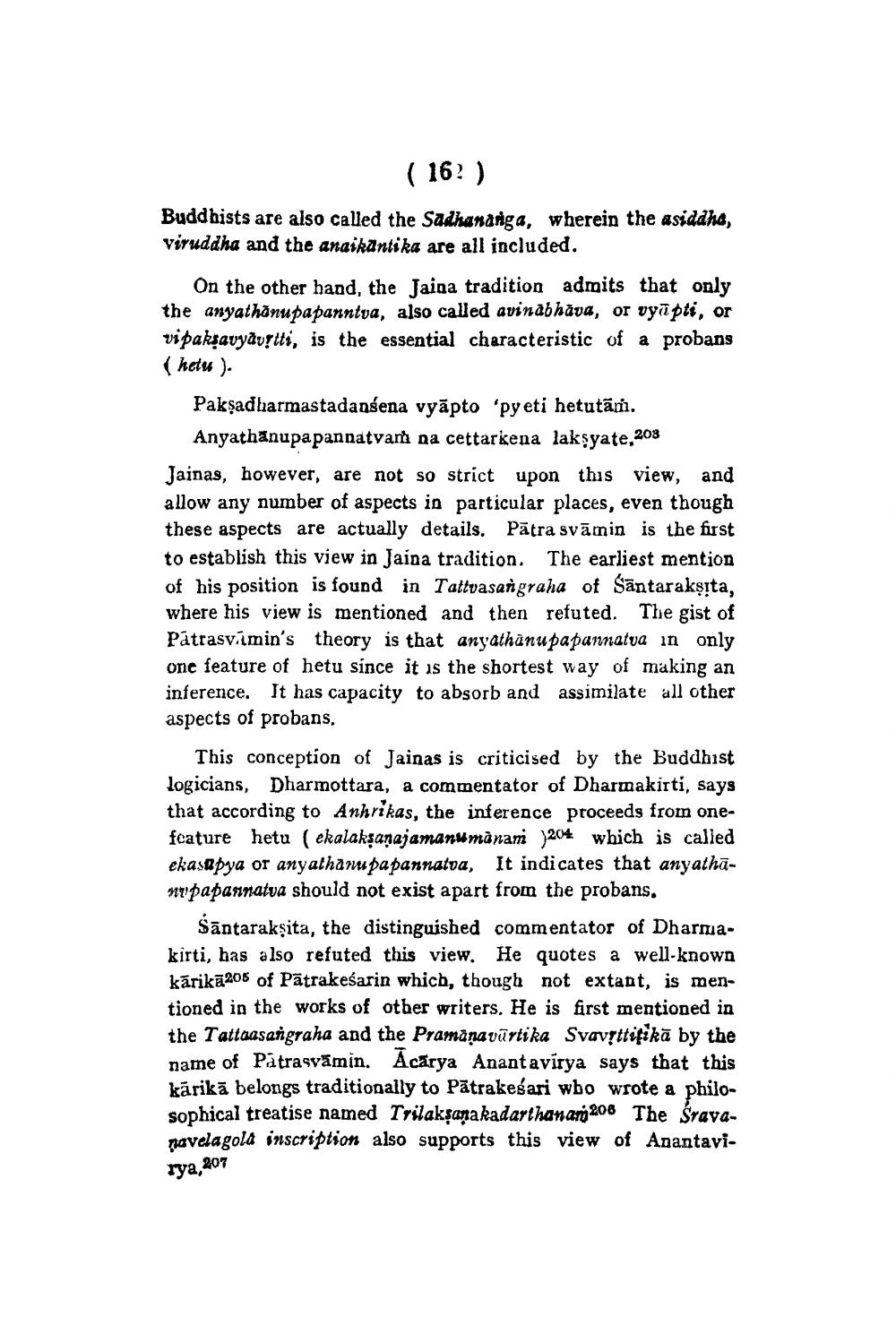________________
( 162 )
Buddhists are also called the Sadhananga, wherein the asiddha, viruddha and the anaikantika are all included.
On the other hand, the Jaina tradition admits that only the anyathanupapanntva, also called avinabhāva, or vyāpti, or vipaksavyavštti, is the essential characteristic of a probans (hetu ).
Pakşadharmastadansena vyāpto 'pyeti hetutan. Anyathanupa pannatvam na cettarkena laksyate,203
Jainas, however, are not so strict upon this view, and allow any number of aspects in particular places, even though these aspects are actually details. Pātra svāmin is the first to establish this view in Jaina tradition. The earliest mention of his position is found in Tattvasangraha of Santaraksta, where his view is mentioned and then refuted. The gist of Patrasvimin's theory is that anyathanu papannatva in only one feature of hetu since it is the shortest way of making an inference. It has capacity to absorb and assimilate all other aspects of probans,
This conception of Jainas is criticised by the Buddhist logicians, Dharmottara, a commentator of Dharmakirti, says that according to Anhrikas, the inference proceeds from onefcature hetu (ekalaksanajamanumanam )204 which is called ekasapya or anyathanupapannatta, It indicates that anyathāno papannatva should not exist apart from the probans.
Sāntarakṣita, the distinguished commentator of Dharmakirti, has also refuted this view. He quotes a well-known kārika205 of Pātrakeśarin which, though not extant, is mentioned in the works of other writers. He is first mentioned in the Tattaasangraha and the Pramana vārtika Svavýttifikā by the name of Patrasvamin. Acārya Anantavirya says that this kārikā belongs traditionally to Pātrakesari wbo wrote a philosophical treatise named Trilaksana kadarthanari 206 The Sravanavelagola inscription also supports this view of Anantavi
rya, 207




